Catocala amatrix
Catocala amatrix
kah-TOCK-uh-lahM
a-MAY-tricks
(Hübner, [1813])
Noctua amatrix
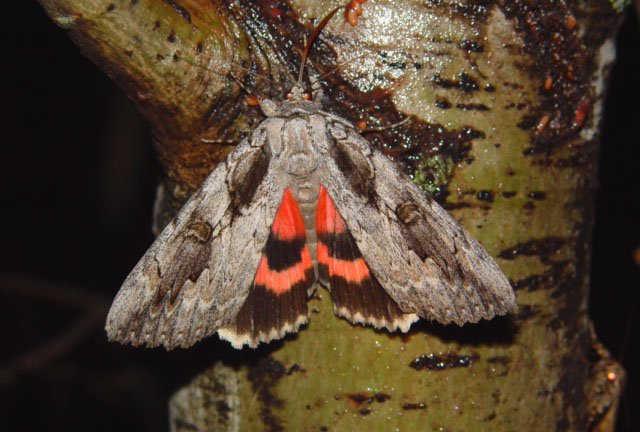
Catocala amatrix, Peterborough, Ontario, August 28, 2004,
courtesy of Tim Dyson copyright.
This site has been created by
Bill Oehlke.
Comments, suggestions and/or additional information are welcomed by Bill.
| TAXONOMY:
Superfamily: Noctuoidea
Family: Erebidae, Leach, [1815]
Subfamily: Erebinae, Leach, [1815]
Tribe: Catocalini, Boisduval, [1828]
Genus: Catocala, Schrank, 1802
|
DISTRIBUTION:
it has also been reported in
Alabama,
Arkansas,
Colorado,
Delaware,
District of Columbia,
Georgia,
Idaho,
Indiana,
Iowa,
Kansas,
Kentucky,
Louisiana,
Maine,
Maryland,
Massachusetts,
Mississippi,
Missouri,
Nebraska,
New Hampshire,
New Jersey,
New Mexico,
North Carolina,
North Dakota,
Ohio,
Pennsylvania,
Rhode Island,
South Carolina,
South Dakota ,
Utah,
Vermont,
Virginia,
West Virginia and
Wyoming.
Based on a recent submission from Jack Love, I have added Idaho to the states listed above. The identification has been confirmed by Larry Gall
who indicates form pallida is prevalent out west.
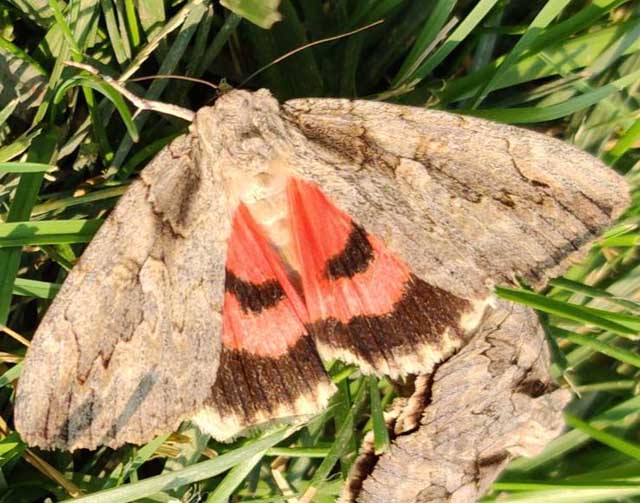
Catocala amatrix form pallida, Homedale, Owyhee County, Idaho,
August 28, 2020, courtesy of Jack Love, id by Dr. Lawrence Gall.
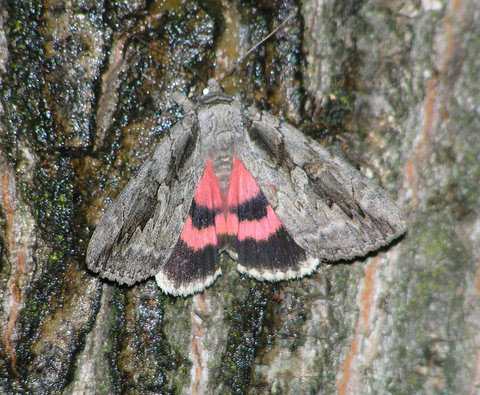
Catocala amatrix, Taylor County, Wisconsin,
August 30, 2006,
courtesy of Joan F. Rickert copyright.
Subspecies editha Edwards, 1875, is found in western portions
of range. In
"Systematics of Moths in the Genus Catocala
(Noctuidae). III. The Types of William H. Edwards, Augustus R. Grote
and Achille Guinee", by Lawrence F. Gall and David C. Hawks, Journal
of the Lepidopterists Society, Volume 56 Number 4, 9 December 2002,
editha is placed as a synonym of amatrix.
Moths respond to lights and to bait, much better to bait according to Sargent.
Similar species: This moth is somewhat similar to C. cara, and it is believed they will hybridize in the wild on occasion.
Visit Pink Underwings of Ontario: Comparison Plate for Catocala concumbens/amatrix/cara,
recto and verso, with commentary, courtesy of Tim Dyson.
Visit Catocala amatrix, recto/verso and form selecta, Mason, Ingham County, Michigan, August 6-8, 1994,
Harry King.
Visit Catocala amatrix form selecta, Peterborough, Ontario, August 10 and 30, 2005,
courtesy of Tim Dyson.
Visit Catocala amatrix, Ozaukee County, Wisconsin, August 12, 2007, courtesy of Kate Redmond.
Visit Catocala amatrix, Buffalo County, Wisconsin, August 12, 2011, courtesy of Marcie O'Connor
Visit Catocala amatrix, form selecta and regular form, August and September 10, 2012, Ogemaw County, Michigan, courtesy of
Cindy Mead.
Visit Catocala amatrix female, Wisconsin, from bait trap, August 19, 2011, courtesy of Ian Miller.
Visit Catocala amatrix female, form selecta, Whitley County, Indiana, August 24, 2016, Tim Loeffler.
Visit Catocala amatrix, Windsor, Ontario, August 29, 2008, courtesy of
Maurice Bottos.
Visit Catocala amatrix, Newport, Orleans County, Vermont, September 5, 2011, Jane Housewright.
Visit Catocala amatrix, female (recto and verso), Willow Bunch, Saskatchewan,
September 26, 2011, courtesy of Tim Taylor.
FLIGHT TIMES AND PREFERRED FOOD PLANTS:
Catocala amatrix are usually on the wing from August to
October in southern Quebec with earlier flight further south.
Catocala amatrix, July 23, Dallas, Texas,
courtesy of Dale Clark. |
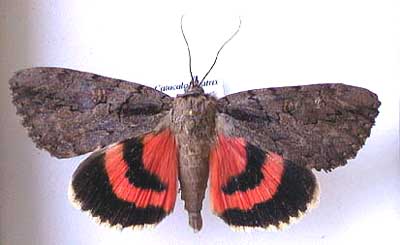 |
Sargent suggests the name "hesseli" for melanic
specimens in honour of Sidney A. Hessel.
Form "selecta" lacks the
diffuse black bar running from the basal area to the apex as depicted
in the specimen to the right, courtesy of Robert Muller, Connecticut.
"Pallida" Barnes and McDunnough, 1918, is a very pale form. | 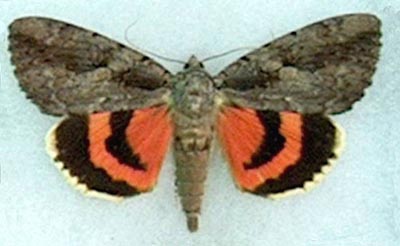 |
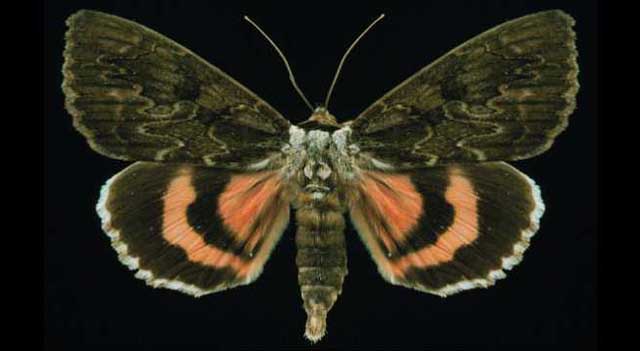
Catocala amatrix "hesseli", Harold J. Vermes slide, used with permission from his son.
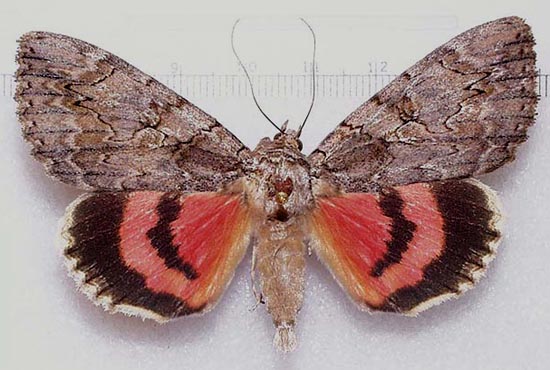
Catocala amatrix "selecta" Walker, [1858], Arizona,
courtesy of Bruce Walsh.
This species is very skittish and frequently
hides in caves, under bridges, under tree bark, etc. by day, resting
with head down.
Camouflage on tree bark is well illustrated in the Cindy Mead
(Michigan) image to the right. The Catocala amatrix caterpillar shows a preference for poplars
and willows.
| 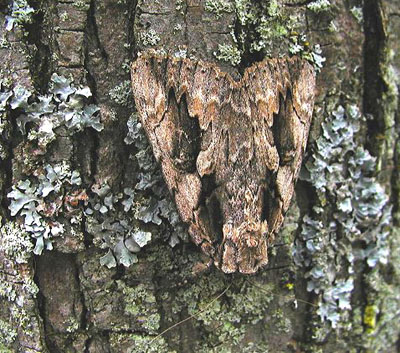 |
ECLOSION:
Adults eclose from pupae at soil surface.
SCENTING AND MATING:
Catocala amatrix females
emit an airbourne pheromone and males use their antennae to track the
scent plume.
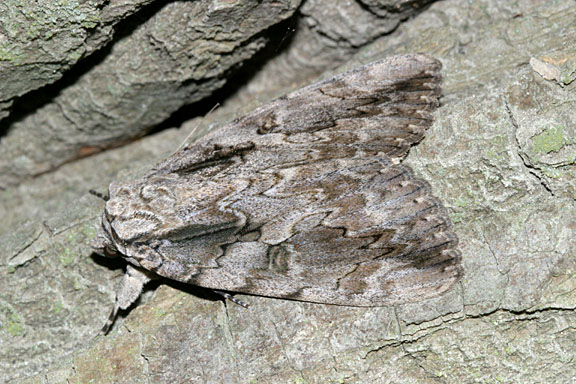
The Sweetheart Underwing, August 8, 2004, courtesy of
Tom Murray
copyright
EGGS, CATERPILLARS, COCOONS AND PUPAE:
Eggs are deposited on
tree bark in the fall and hatch the following spring.
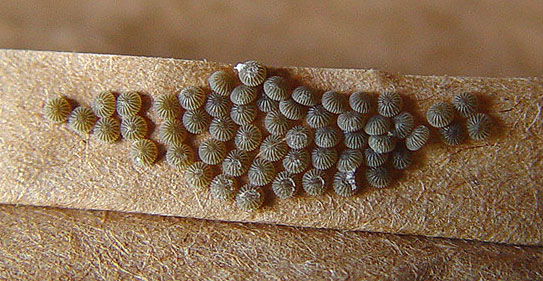
Catocala amatrix eggs, courtesy of Tim Dyson.
copyright
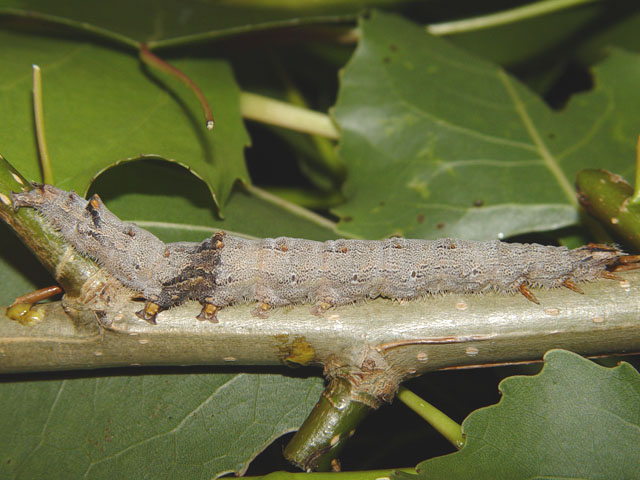
Catocala amatrix fifth instar, courtesy of Ron Nelson.
copyright
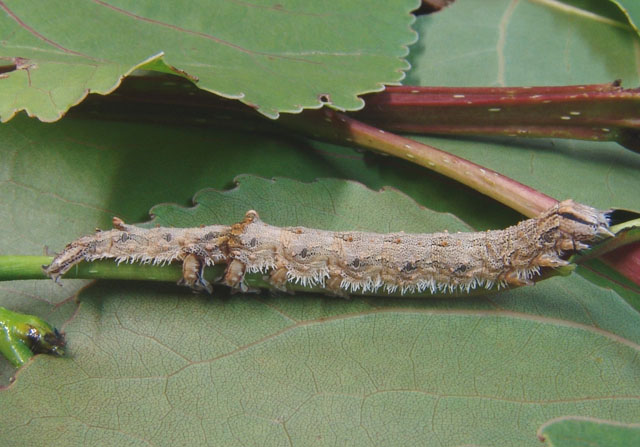
Catocala amatrix fifth instar, courtesy of Gabriel Larrabee.
copyright
Larval Food Plants
Listed below are primary food plant(s) and alternate food plants.
It is hoped that this alphabetical listing followed by the common
name of the foodplant will prove useful. The list is not exhaustive,
although some species seem very host specific.
Experimenting with closely related foodplants is worthwhile.
Populus deltoides.........
Populus grandidenta
Populus nigra
Populus tremuloides
Salix nigra
|
Cottonwood
Big tooth aspen
Lombardy Poplar
Quaking Aspen
Black Willow
|
Return to Main Index
This page is brought to you by Bill Oehlke and the
WLSS. Pages are on space rented from Bizland. If you would like
to become a "Patron of the Sphingidae/Catocala Sites",
contact Bill.
Please send sightings/images to Bill. I will do my best to respond to requests for identification help.
Enjoy one of nature's wonderments: Live Saturniidae (Giant Silkmoth) cocoons.

|

To show appreciation for this site, click on the flashing
butterfly to the left, a link
to many worldwide insect sites. |













